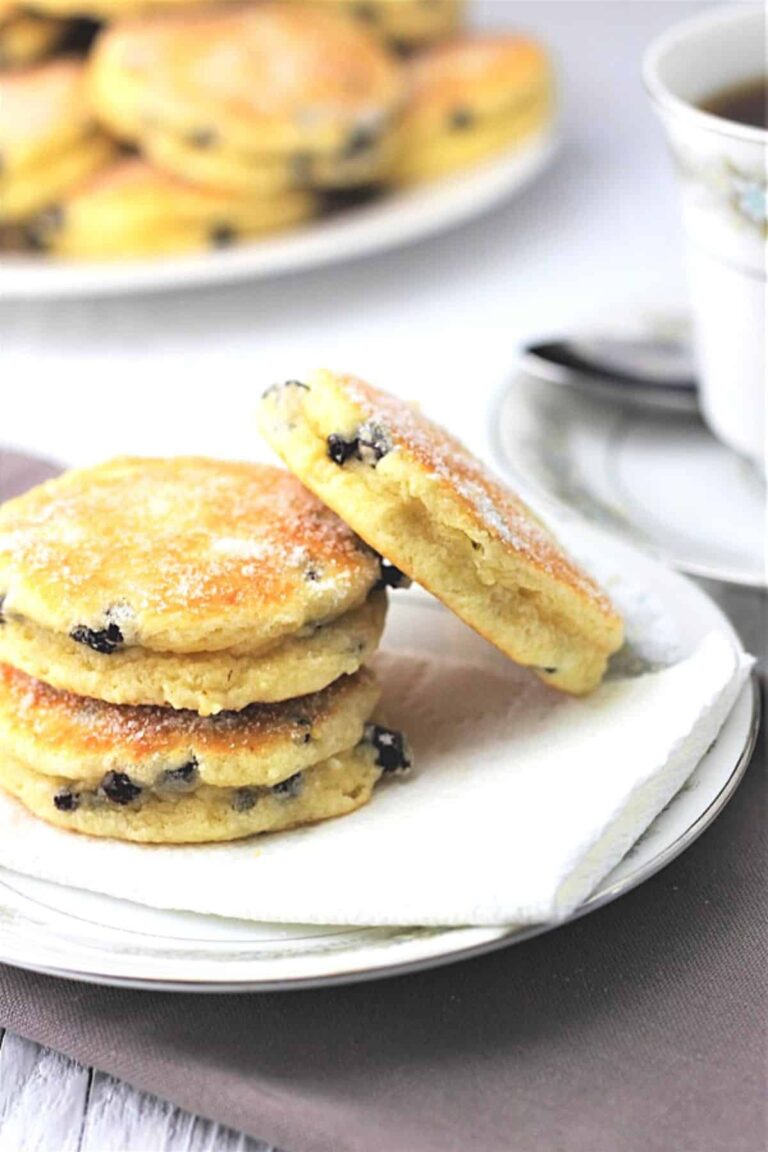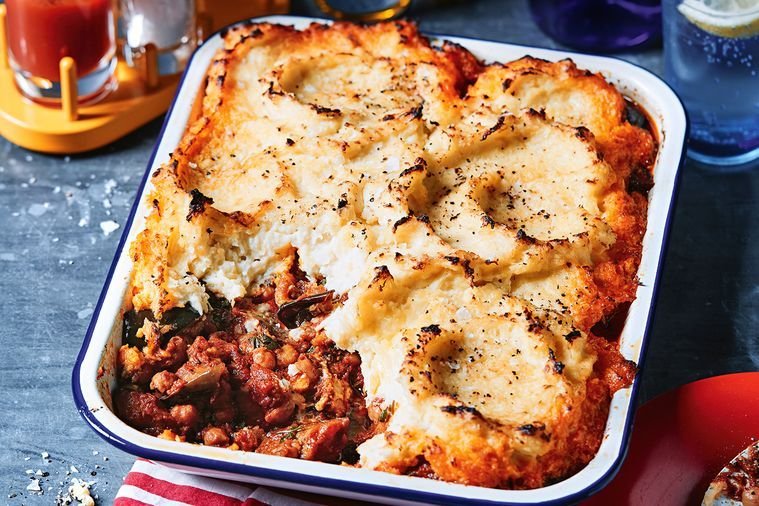Bún Thang Recipe: A Delicious Guide To Authentic Vietnamese Cuisine
Looking for an authentic Vietnamese dish that’s both flavorful and satisfying? Look no further! Today, we’re going to dive into the delectable world of bún thang recipe. This traditional Hanoi noodle soup is a perfect blend of savory chicken broth, tender shredded chicken, and a variety of vibrant toppings. Whether you want to impress your guests or simply indulge in a bowl of comfort, this recipe will surely elevate your culinary skills. So, let’s get started on mastering the art of crafting this delicious Vietnamese delight!
Bún Thang Recipe: Your Guide to a Traditional Vietnamese Noodle Dish
Introduction
Bún Thang, a classic dish from Northern Vietnam, is a noodle soup that combines various ingredients to create a delicate and flavorful experience. Known for its light broth, thin noodles, and assortment of toppings, Bún Thang captures the essence of Vietnamese cuisine. In this article, we will guide you through the step-by-step process of preparing this authentic dish, providing you with all the necessary details and tips to make it a success.
Section 1: Understanding Bún Thang
Bún Thang is a traditional Vietnamese soup that originated in Hanoi. It is typically eaten for breakfast or lunch and has become a beloved dish across Vietnam. The name “Bún Thang” translates to “floating noodles” in English, as the ingredients are carefully arranged to resemble a delicate floating lotus flower.
1.1 Origins and Significance of Bún Thang
The dish has a long history and is deeply rooted in Vietnamese culinary traditions. It originated as a creative way to use up leftover ingredients from Tet, the Vietnamese Lunar New Year celebration. Bún Thang showcases the resourcefulness and ingenuity of Vietnamese cooks who transformed simple ingredients into an elegant and flavorful meal.
1.2 Unique Characteristics of Bún Thang
Bún Thang stands out among other Vietnamese soups due to its delicate and light broth. Unlike the rich and robust flavors of Pho or Bun Bo Hue, Bún Thang’s broth is subtle, allowing the flavors of the toppings to shine through. Additionally, the noodles used in Bún Thang are thin and delicate, adding to the overall lightness of the dish.
Section 2: Ingredients and Preparation
2.1 Essential Ingredients
To prepare a delicious bowl of Bún Thang, you will need the following key ingredients:
- Chicken broth: Provides the flavorful base of the soup.
- Chicken: Cooked and shredded chicken breast adds protein and texture to the dish.
- Shrimp: Optional, but adds a delightful seafood flavor to the soup.
- Dried shrimp: Adds a umami depth to the broth.
- Dried shiitake mushrooms: Soaked and thinly sliced for an earthy taste.
- Dried squid: Adds a subtle seafood flavor to the broth.
- Fish sauce: Provides the necessary saltiness and depth of flavor.
- Vietnamese ham (Cha lua): Thinly sliced for added texture and flavor.
- Pork floss: Adds a savory touch and enhances the visual appeal.
- Bean sprouts: Fresh, crunchy sprouts that add a refreshing element.
- Scallions: Thinly sliced for a mild onion flavor and vibrant color.
- Cilantro: Chopped cilantro leaves for a fresh herbaceous taste.
- Rice noodles: Thin rice noodles that absorb the flavors of the broth.
- Roasted peanuts: Crushed roasted peanuts for a nutty crunch.
- Fried shallots: Adds a crispy texture and a hint of sweetness.
2.2 Preparation Steps
To make Bún Thang, follow these steps:
- Prepare the chicken broth by simmering chicken bones, dried shrimp, dried squid, and shiitake mushrooms for several hours. Strain the broth to remove any impurities.
- Cook the chicken breast separately until tender, then shred it into bite-sized pieces.
- Clean and devein the shrimp, if using, and cook them until they turn pink.
- Soak the dried noodles in hot water until they are soft and pliable, then drain and rinse them under cold water.
- Thinly slice the Vietnamese ham, scallions, and cilantro.
- Prepare the toppings by crushing the roasted peanuts and frying the shallots until golden brown and crispy.
Section 3: Assembling and Serving
3.1 The Art of Assembly
The presentation of Bún Thang is an important aspect of the dish. To create an aesthetically pleasing bowl of Bún Thang, follow these steps:
- Place a portion of drained noodles in the center of the bowl.
- Arrange the shredded chicken, cooked shrimp, and Vietnamese ham on top of the noodles, forming a circular pattern.
- Add a sprinkle of sliced scallions, chopped cilantro, fried shallots, and crushed peanuts for added flavor and texture.
- Gently ladle the hot broth into the bowl, being careful not to disturb the arrangement.
- Finish by adding a few bean sprouts on top for a fresh crunch.
3.2 Serving and Enjoying
Bún Thang is typically served with additional condiments and accompaniments to enhance the flavors. Some common additions include:
- Lime wedges: Squeeze fresh lime juice into the soup to add a refreshing tang.
- Chili sauce: Add a touch of heat with your preferred chili sauce or Sriracha.
- Herbs: Basil and mint leaves can be torn and added for an extra layer of fragrance.
- Crunchy vegetables: Sliced cucumbers, lettuce, or pickled carrots and daikon provide additional texture and freshness.
Enjoy your bowl of Bún Thang by mixing the ingredients together and savoring the harmonious blend of flavors and textures.
Section 4: Variations and Regional Influences
4.1 Regional Variations of Bún Thang
While Bún Thang is most commonly associated with Hanoi, there are regional variations throughout Vietnam. Some notable variations include:
- Bún Thang Nam Dinh: Originating from Nam Dinh province, this variation features additional toppings such as egg rolls and grilled pork.
- Bún Thang Hue: Popular in Central Vietnam, this version includes thicker noodles and a heartier broth.
- Bún Thang Saigon: In southern Vietnam, the dish is often served with a slightly sweeter broth and additional vegetables.
4.2 Vegetarian and Vegan Options
For those following a vegetarian or vegan diet, it is possible to modify Bún Thang to suit your preferences. Consider the following substitutions:
- Use vegetable broth or mushroom broth as a base for the soup.
- Replace the chicken and seafood with tofu or tempeh for protein.
- Add a variety of vegetables such as mushrooms, carrots, and bok choy for a wholesome twist.
Bún Thang is a quintessential Vietnamese dish that perfectly balances flavors, textures, and aesthetics. Its delicate broth, thin noodles, and carefully arranged toppings create a satisfying and visually appealing culinary experience. Whether you’re in Hanoi or exploring the regional variations across Vietnam, Bún Thang is a dish that showcases the artistry and depth of Vietnamese cuisine. By following this recipe and adding your own personal touch, you can enjoy the flavors of Vietnam in your own kitchen. So grab your chopsticks and indulge in a bowl of Bún Thang today!
Hanoi Combo Noodle Soup Recipe (BÚN THANG) | Helen's Recipes
Frequently Asked Questions
What is bún thang?
Bún thang is a traditional Vietnamese dish that is often enjoyed as a specialty in Hanoi, the capital city. It is a delicate noodle soup made with thin rice vermicelli, tender shredded chicken, thinly sliced omelette, pork slices, and various herbs. Bún thang is known for its light and flavorful broth, which is made from simmering chicken bones and dried shrimp.
How do I make bún thang from scratch?
To make bún thang from scratch, you will need the following ingredients: rice vermicelli noodles, chicken breasts, eggs, pork loin, dried shrimp, shrimp paste, fish sauce, sugar, salt, white pepper, cilantro, green onions, bean sprouts, and lime wedges. Start by cooking the chicken breasts and pork loin in a pot of water until fully cooked, then shred the meat into thin strips. Next, whisk the eggs and make an omelette, then slice it into thin strips as well. Prepare the broth by simmering the chicken bones and dried shrimp with water, fish sauce, shrimp paste, sugar, salt, and white pepper. Finally, assemble the dish by placing cooked rice vermicelli noodles in a bowl, topping it with the shredded chicken, pork, omelette, and herbs, and pouring the hot broth over it. Serve with bean sprouts and lime wedges on the side.
Can I substitute the meat in bún thang?
Yes, you can customize the meat in bún thang based on your preferences. While the traditional recipe uses chicken breasts and pork loin, you can substitute them with other proteins such as shrimp, tofu, or beef. You can also make a vegetarian version by omitting the meat entirely and adding more vegetables and tofu instead. Feel free to experiment and adapt the recipe to suit your taste.
What are some variations of bún thang?
While the traditional bún thang recipe is widely loved, there are a few variations you can try. Some variations include adding additional toppings such as Vietnamese sausage (giò lụa), dried shrimp floss, or fried shallots for added texture and flavor. You can also add different herbs like Thai basil, mint, or coriander to enhance the aroma. These variations can provide a unique twist to the classic bún thang dish.
Is bún thang gluten-free?
Yes, bún thang can be made gluten-free by using gluten-free rice vermicelli noodles and ensuring that the condiments and sauces used in the recipe are also gluten-free. Be sure to check the labels of the ingredients you use to ensure they are suitable for a gluten-free diet. Additionally, if you have gluten sensitivity or celiac disease, it’s important to prepare the dish in a clean and separate cooking area to avoid cross-contamination.
Final Thoughts
Bún thang is a traditional Vietnamese dish that offers a delightful combination of flavors and textures. This recipe is a must-try for those looking to explore the rich culinary heritage of Vietnam. By using simple ingredients like rice vermicelli, shredded chicken, and delicate herbs, you can create a bowl of bún thang that is both visually appealing and delicious. The key to mastering this recipe lies in the careful preparation of the ingredients and the artful assembly of the dish. So, if you’re ready to embark on a culinary adventure, give the bún thang recipe a try and savor the authentic taste of Vietnam.



